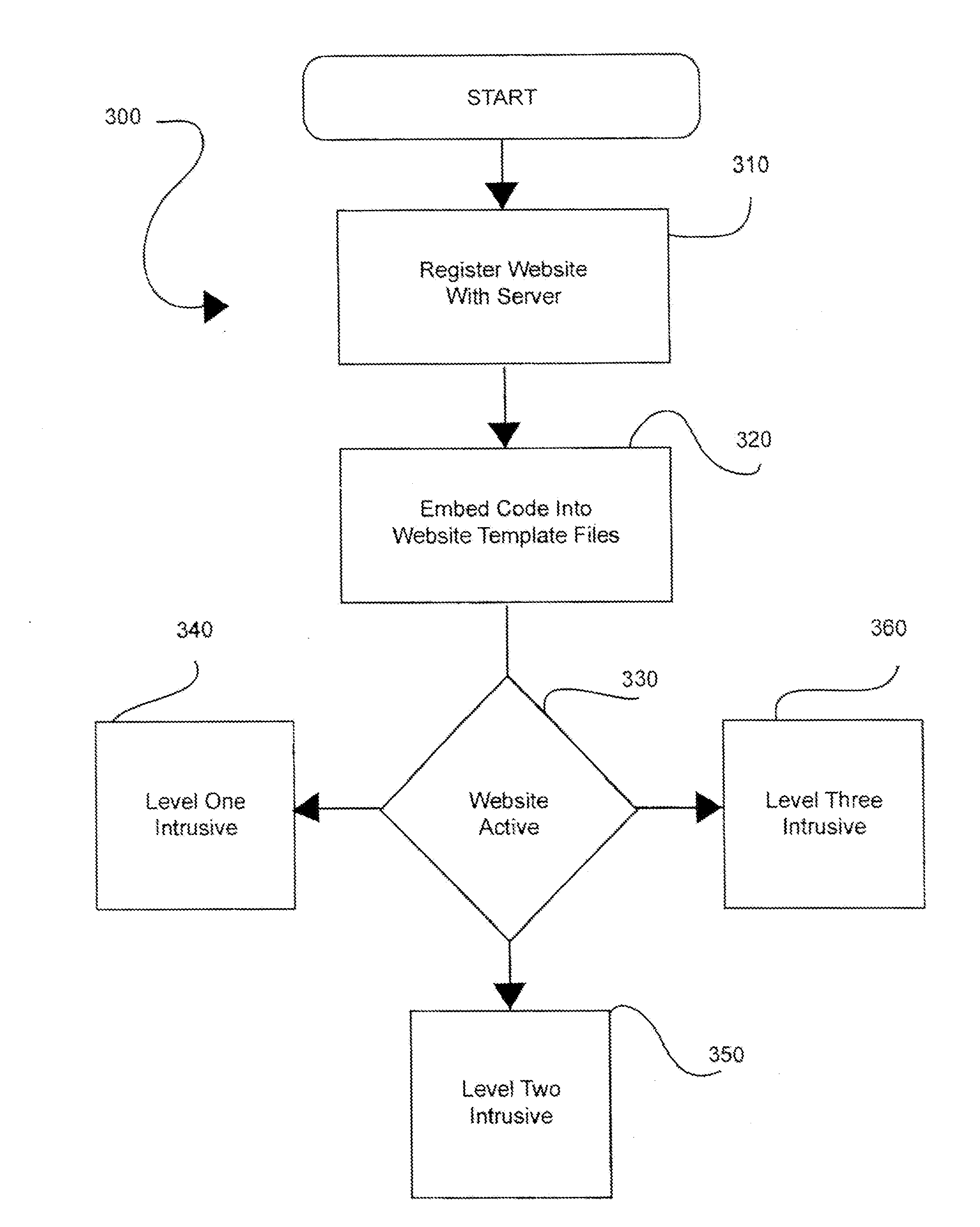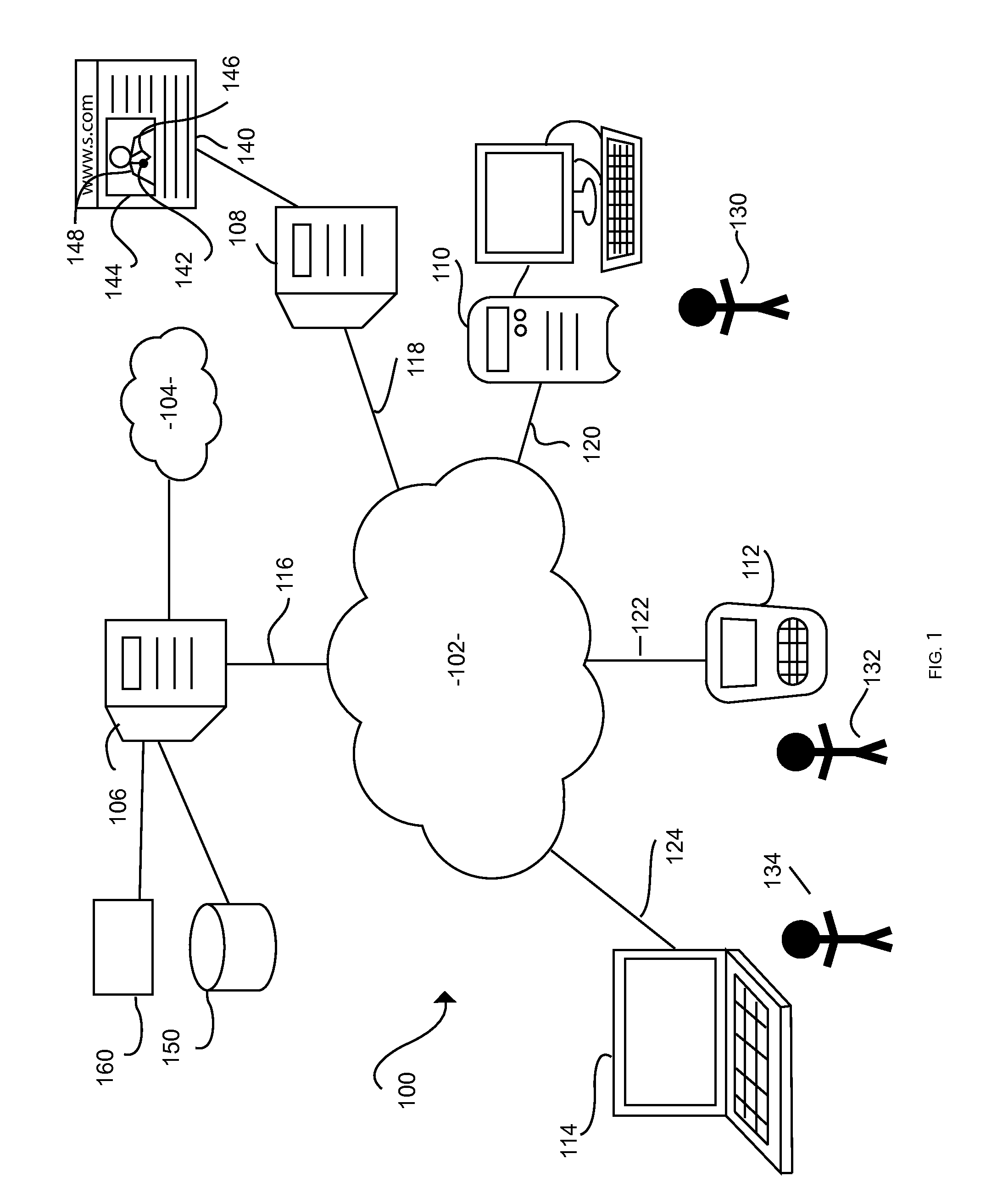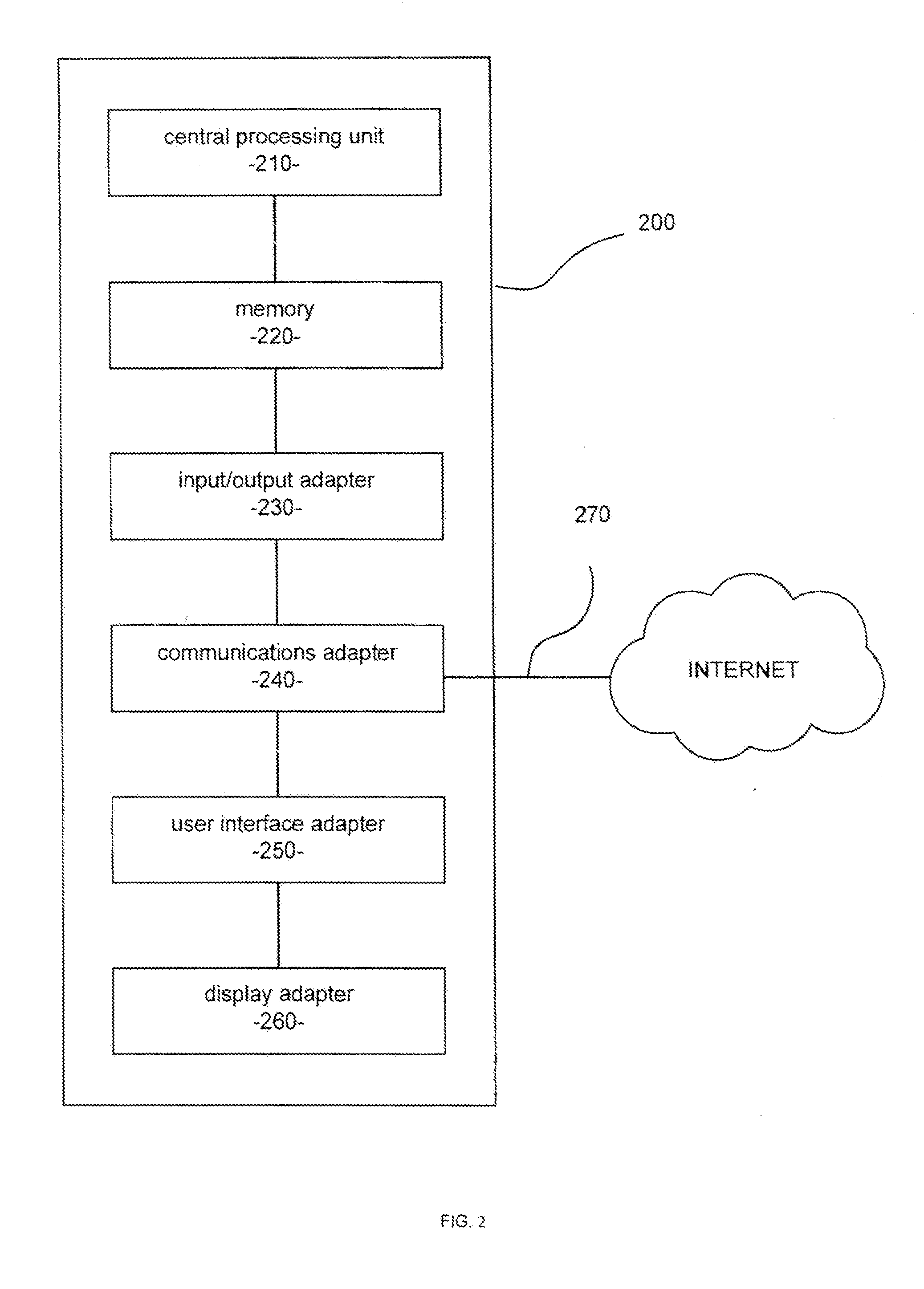Method and system for collaborative or crowdsourced tagging of images
a crowd-sourced and image-based technology, applied in the field of methods and systems for crowd-sourced tagging of images, can solve the problems of limiting systems and methods, limiting the number of users who can tag static images from the front end of a website, and limiting the number of users who can tag static images
- Summary
- Abstract
- Description
- Claims
- Application Information
AI Technical Summary
Benefits of technology
Problems solved by technology
Method used
Image
Examples
Embodiment Construction
[0028]Referring to the drawings and first to FIG. 1, this shows a distributed data process system 100. The distributed data processing system 100 is given by way of example only and is typical of a distributed data processing system in which an improved method and system for tagging an image or other content may be implemented. The distributed data processing system 100 includes networks 102 and 104. In this example, network 102 is the Internet and network 104 is an intranet such as a wide area network (WAN) or local area network (LAN). The Internet, or network 102, allows for communication between various processors including two servers 106 and 108, a desktop computer 110, a handheld device 112 such as a personal digital assistant or smartphone, and a laptop computer 114. The intranet, or network 104, allows for communication between server 106 and other processors (not shown). It will be understood by a person skilled in the art that distributed data processing system 100 may fur...
PUM
 Login to View More
Login to View More Abstract
Description
Claims
Application Information
 Login to View More
Login to View More - R&D
- Intellectual Property
- Life Sciences
- Materials
- Tech Scout
- Unparalleled Data Quality
- Higher Quality Content
- 60% Fewer Hallucinations
Browse by: Latest US Patents, China's latest patents, Technical Efficacy Thesaurus, Application Domain, Technology Topic, Popular Technical Reports.
© 2025 PatSnap. All rights reserved.Legal|Privacy policy|Modern Slavery Act Transparency Statement|Sitemap|About US| Contact US: help@patsnap.com



